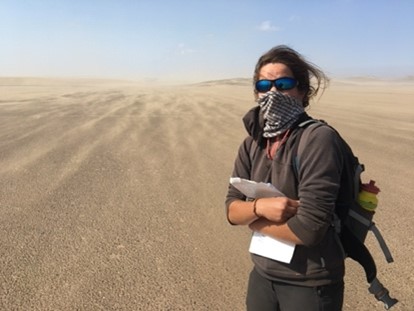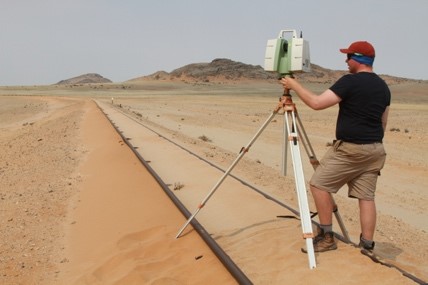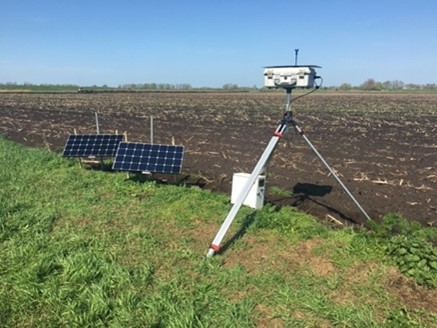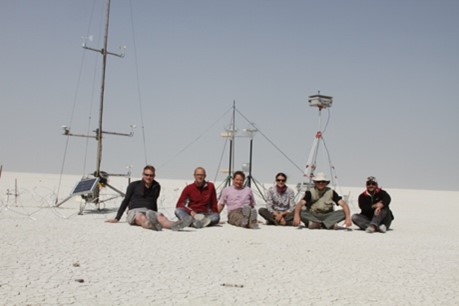Professor Giles Wiggs
Professor of Aeolian Geomorphology
Head of School of Geography and the Environment
Fellow and Tutor, Brasenose College, Oxford
PA: Alexandra Norrish
Professor of Aeolian Geomorphology
Head of School of Geography and the Environment
Fellow and Tutor, Brasenose College, Oxford
PA: Alexandra Norrish
Academic Profile
I am a desert geomorphologist specialising in the physical processes controlling aeolian sediment transport and landform dynamics. My research interests focus on establishing the impact of environmental, climatic, and anthropogenic changes on sand dune dynamics, regional sand sea stability, desert dust emission, and agricultural wind erosion. I have specific expertise in quantifying airflow and sediment transport in dryland systems including cutting-edge research on the role of wind turbulence in desert landscape development, and determinations of erosion thresholds in natural and human-influenced aeolian systems. My research utilises field measurements, wind tunnel modelling, and mathematical simulations with projects spanning northern and southern Africa, the USA, Central Asia, China, the Middle East, Australia, and the UK. Major research grants are funded by NERC, EU Horizon 2020, Royal Society, National Science Foundation (USA), and Médecins Sans Frontières.
I am a Fellow, Tutor and former Dean at Brasenose College, Oxford, and have previously held positions as Reader and Senior Lecturer at the University of Sheffield, UK. At the School of Geography and the Environment at Oxford I have held key administrative roles including Director of Graduate Studies, Chair of the International Graduate School, Chair of the Final Honours School Examinations Board, Chair of the Preliminary Examinations Board, and Director of Undergraduate Admissions. I have represented the School of Geography at the Divisional Graduate Studies Committee, Divisional Teaching Audit Committee, and the ESRC Doctoral Training Centre Management Board.
Since 2019 I have been the Senior Responsible Owner and Chair of the Project Board for the £4 mill refurbishment of the Dyson Perrins Laboratories, a major extension of the buildings for the School of Geography and the Environment and housing the Environmental Change Institute from 2022. I am also on the Programme Board for Reuben College overseeing a construction budget of £37 mill.
I am on the Board of Directors of the International Society for Aeolian Research (ISAR), have Chaired the Distinguished Career Award Committee of ISAR, and Chair the Organising Committee for the next International Conference on Aeolian Research (ICAR 2022) to be held in Namibia.

Current Research
Dune dynamics and processes of aeolian sediment transport
The Origin of Aeolian Dunes (TOAD) - £1 mill NSFGEO-NERC. Whilst we have some understanding of sand dune dynamics and their response to environmental change, we know very little about the genesis of sand dunes and the specific controls on their initiation. Such an understanding is vital to determine environmental influences on sand sea and coastal dune development on Earth, and to help our interpretation of environments and dune forms on other planets like Mars. This project is a collaboration with colleagues at the Universities of Notre Dame and Illinois (USA), and Southampton and Loughborough Universities (UK). Investigations employ a combination of desert fieldwork with high resolution terrestrial laser scanning and sonic anemometry, and innovative flume experiments in the laboratory to quantify the role and importance of windflow, sediment transport and surface feedbacks on the emergence of sedimentary bedforms.

Sand Mitigation around Railway Tracks (SMaRT) - £680k EU Horizon 2020. Investment in railway construction in desert regions is rapidly expanding. Countries in the Middle East have allocated around $US 259 billion to build 40,000 km of railway tracks up to 2030. However, railway infrastructure in deserts faces severe challenges in the form of windblown sand and migrating dunes which can result in rail burial, ballast contamination, and train derailment. This collaborative project with Politecnico di Torino (Italy) and Optiflow (France) uses mathematical modelling, fluid dynamics, and field testing to quantify the hazards and to develop effective engineering designs to mitigate against windblown sand and dunes around desert railways.

Securing Long-term Ecosystem Function in Lowland Organic Soils (SEFLOS) - £252k NERC. The East Anglian peat fenland is a major region of UK vegetable production with an estimated value of £1.2 billion annually. However, wind erosion in the dry climate and microbial breakdown of the peat results in significant soil loss that has been recognised as a major threat to soil security in the UK. The degradation of the peat also significantly contributes to the accumulation of greenhouse gases in the atmosphere. This project, collaborating with Bangor University, Leicester University, and the UK Centre for Ecology and Hydrology, aims to quantify the controls on soil loss under agricultural activity, and investigates management plans to reduce soil degradation.

Dust Observations for Models (Do4 Models) - £1.2 mill NERC. Windblown dust is a major global export from the world's deserts playing a critical role in the Earth's land-atmosphere-ocean-biosphere system. It has been shown to have a crucial influence on the radiation balance and climate modulation, iron fertilization of the ocean, long-distance nutrient transport and soil geochemistry, and human health. Yet the complex controls governing the emission of dust and the dynamics of individual dust emission events remain poorly understood. Such uncertainties in characterising dust source behaviour lead to significant challenges for the development of models representing dust emission into the atmosphere. This project, and much recent allied research, aims to fill this data gap by measuring dust emission processes, including atmospheric and surface controls, at the source of emission. Fieldwork has included several major deployment campaigns in dry lake beds and ephemeral river channels in Botswana and Namibia since 2015.

Teaching and Supervision
Undergraduate
I contribute to the Preliminary Examination lectures on 'Geomorphology' for the 'Earth System Processes' core course. I also lecture on the 'Earth System Dynamics' core course and the 'Desert Landscapes and Dynamics' Option for the Final Honours School.
Graduate
My research interests include: measuring and modelling aeolian processes in deserts with an emphasis on aeolian sediment transport; sand dune dynamics; emission and dynamics of windblown dust; desert geomorphology; aeolian hazards; and low latitude environmental change. Research techniques focus on fieldwork and modelling of aeolian processes in all desert environments including southern Africa, the Middle East, USA, China, Australia, and South America.
Enquiries from prospective DPhil students concerning any aspect of desert geomorphology are welcomed.
Current Graduate Research Students
| Jasem A Albanai | Remote sensing of aeolian dynamics |
| Rosie Huck | Modelling landscape response to environmental change in susceptible drylands |
| Natasha Wallum | Determining controls on aeolian dust emissions: analysis of dynamic processes at Etosha Pan, Namibia |
Recent Graduate Research Students
| Yukun Liu | Numerical simulation of the internal structure of aeolian sand dunes using cellular automaton modelling |
| Ciaran Nash | Sand mitigation along railway tracks - evaluation of sand hazards and field testing of mitigation measures |
| Andrew Dansie | The role of windblown dust from ephemeral river valleys in the fertilisation of the Benguela Upwelling System |
| Jerome Mayaud | Development and testing of a coupled vegetation / sediment-transport model for dryland environments |
Mengchun Cui (School of Geography and Ocean Science, Nanjing University, Nanjing, China) | Quantitative evaluation of landscape dust emission in northern China |
Johannah von Holdt (Environmental & Geographical Science, University of Cape Town, South Africa) | Aeolian dust emission dynamics across spatial scales: landforms, controls and characteristics |





